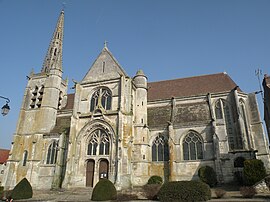Baron, Oise
| Baron | |
|---|---|

|
|
| Coordinates: 49°10′26″N 2°43′49″E / 49.1739°N 2.7303°ECoordinates: 49°10′26″N 2°43′49″E / 49.1739°N 2.7303°E | |
| Country | France |
| Region | Hauts-de-France |
| Department | Oise |
| Arrondissement | Senlis |
| Canton | Nanteuil-le-Haudouin |
| Intercommunality | Pays de Valois |
| Government | |
| • Mayor (2008–2014) | Philippe Moquet |
| Area1 | 21.47 km2 (8.29 sq mi) |
| Population (2009)2 | 783 |
| • Density | 36/km2 (94/sq mi) |
| Time zone | CET (UTC+1) |
| • Summer (DST) | CEST (UTC+2) |
| INSEE/Postal code | 60047 / 60300 |
| Elevation | 63–151 m (207–495 ft) (avg. 85 m or 279 ft) |
|
1 French Land Register data, which excludes lakes, ponds, glaciers > 1 km² (0.386 sq mi or 247 acres) and river estuaries. 2Population without double counting: residents of multiple communes (e.g., students and military personnel) only counted once. |
|
1 French Land Register data, which excludes lakes, ponds, glaciers > 1 km² (0.386 sq mi or 247 acres) and river estuaries.
Baron is a commune in the Oise department in northern France.
On September 3, 1914, in the early stages of World War I, the estate of Manoir de Fontaines at Baron was the scene of composer Albéric Magnard shooting at invading German soldiers, killing one of them, and then being killed when they set the house on fire. At the time the event focused considerable public attention on Baron, Magnard being considered a French national hero for his act.
...
Wikipedia


